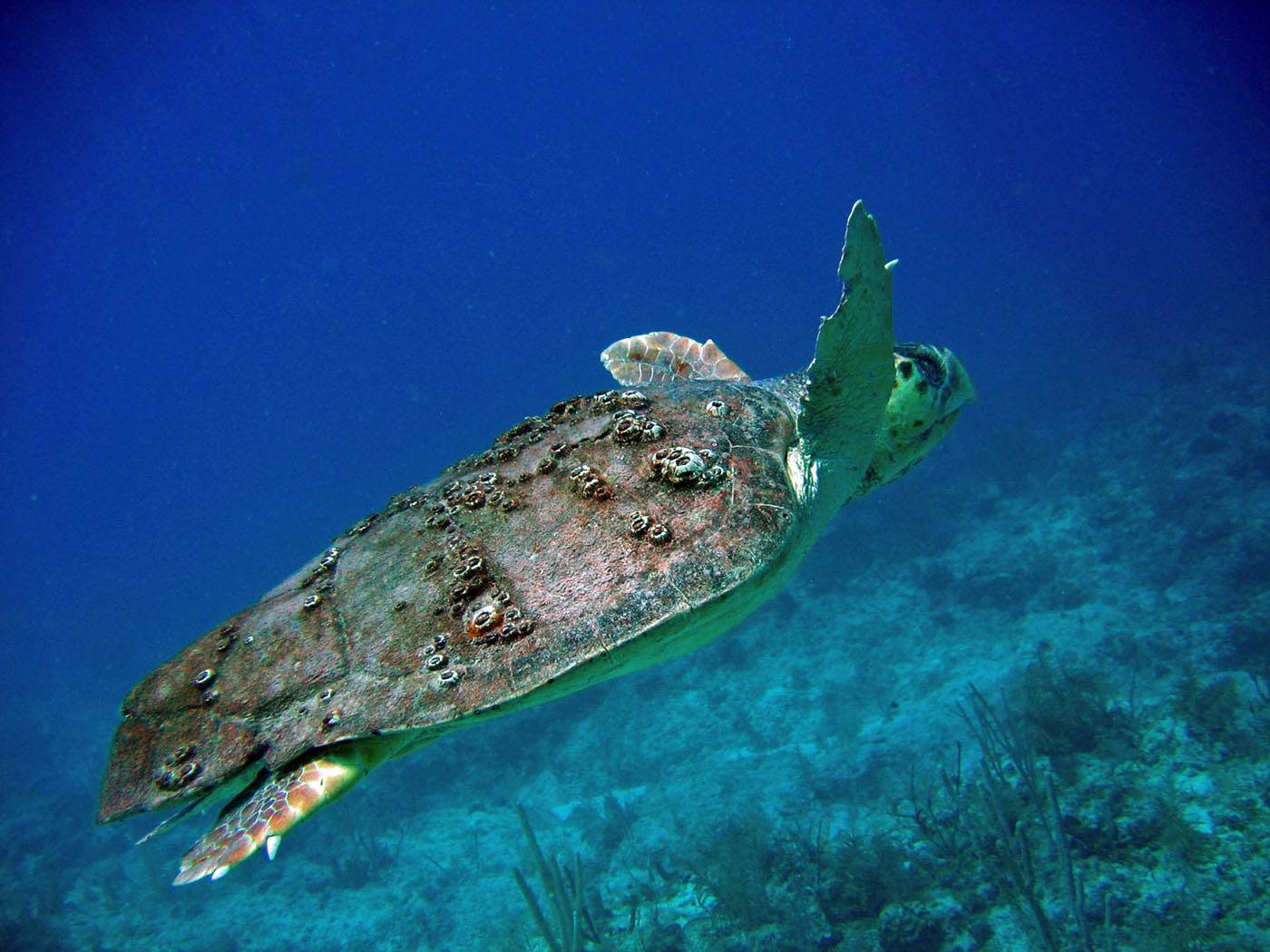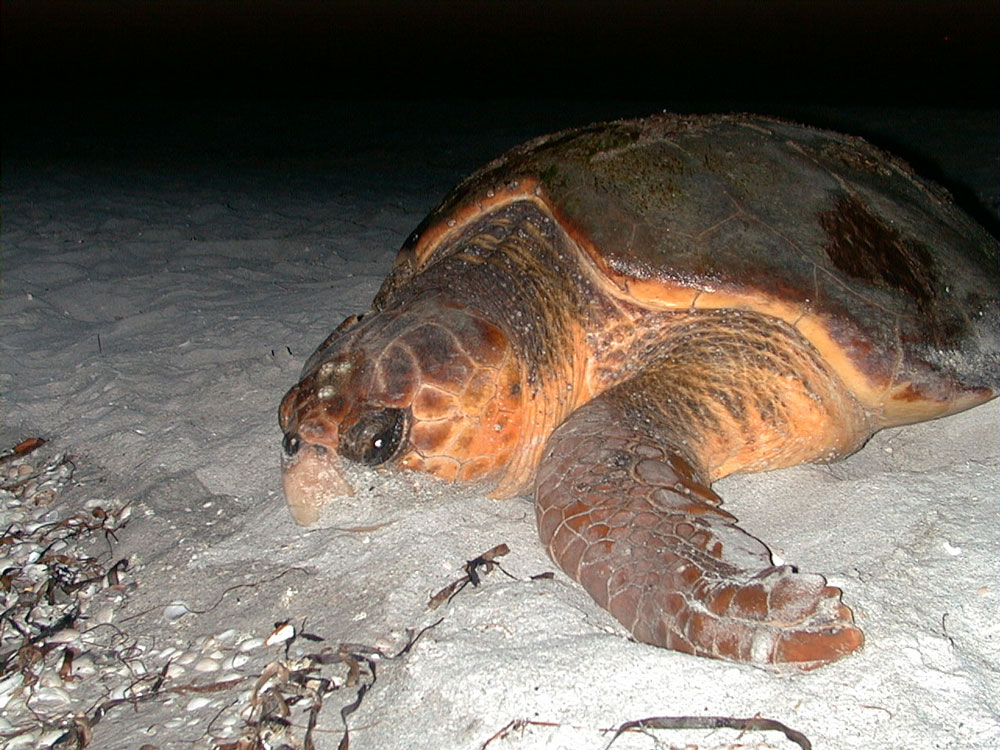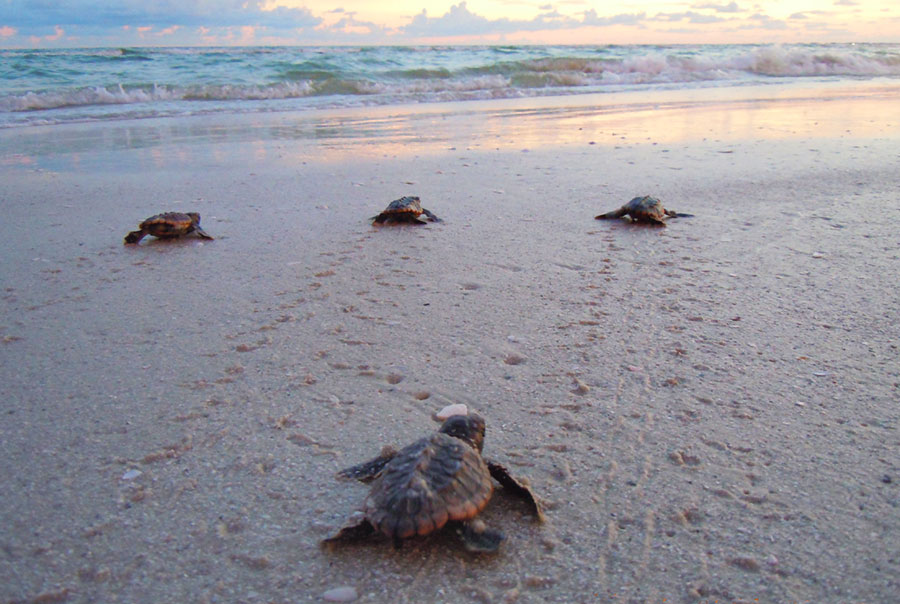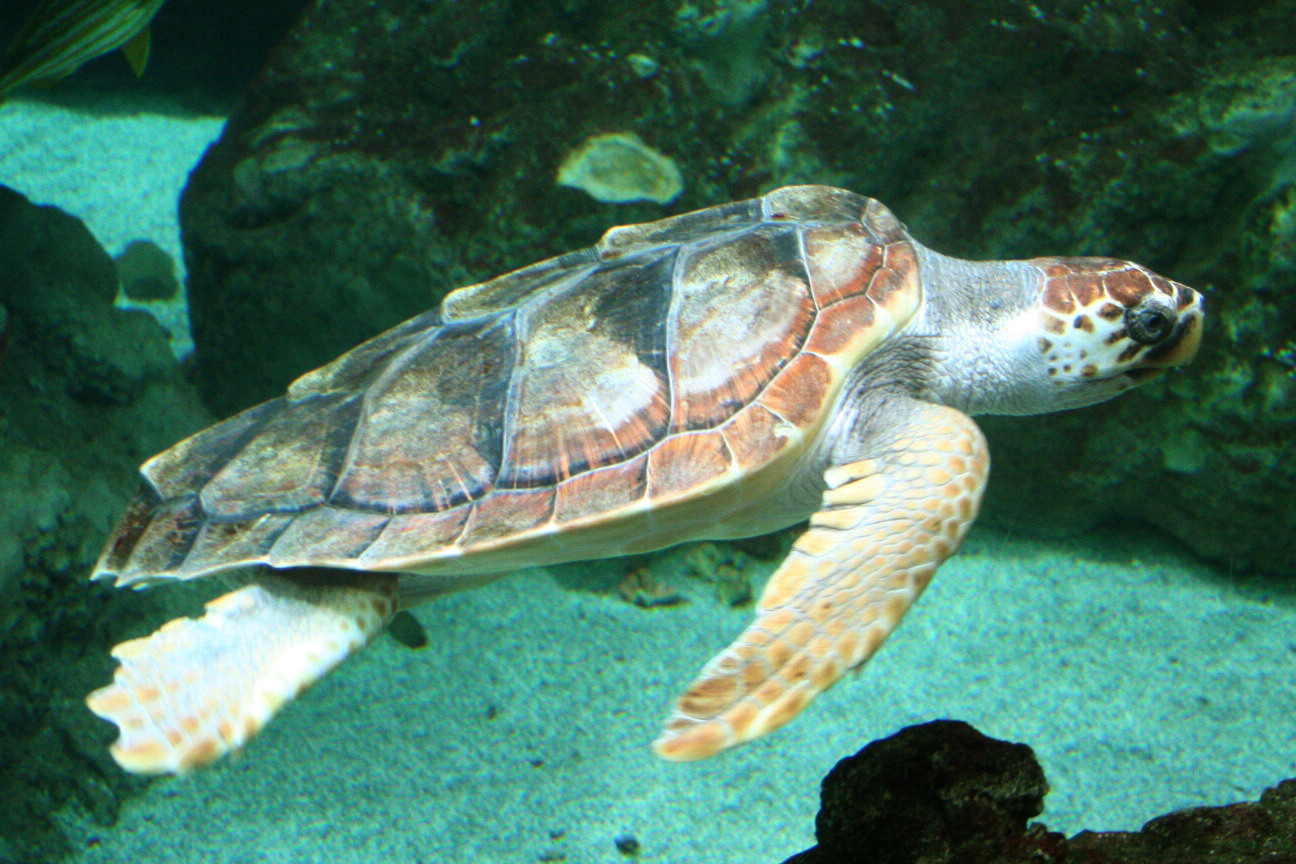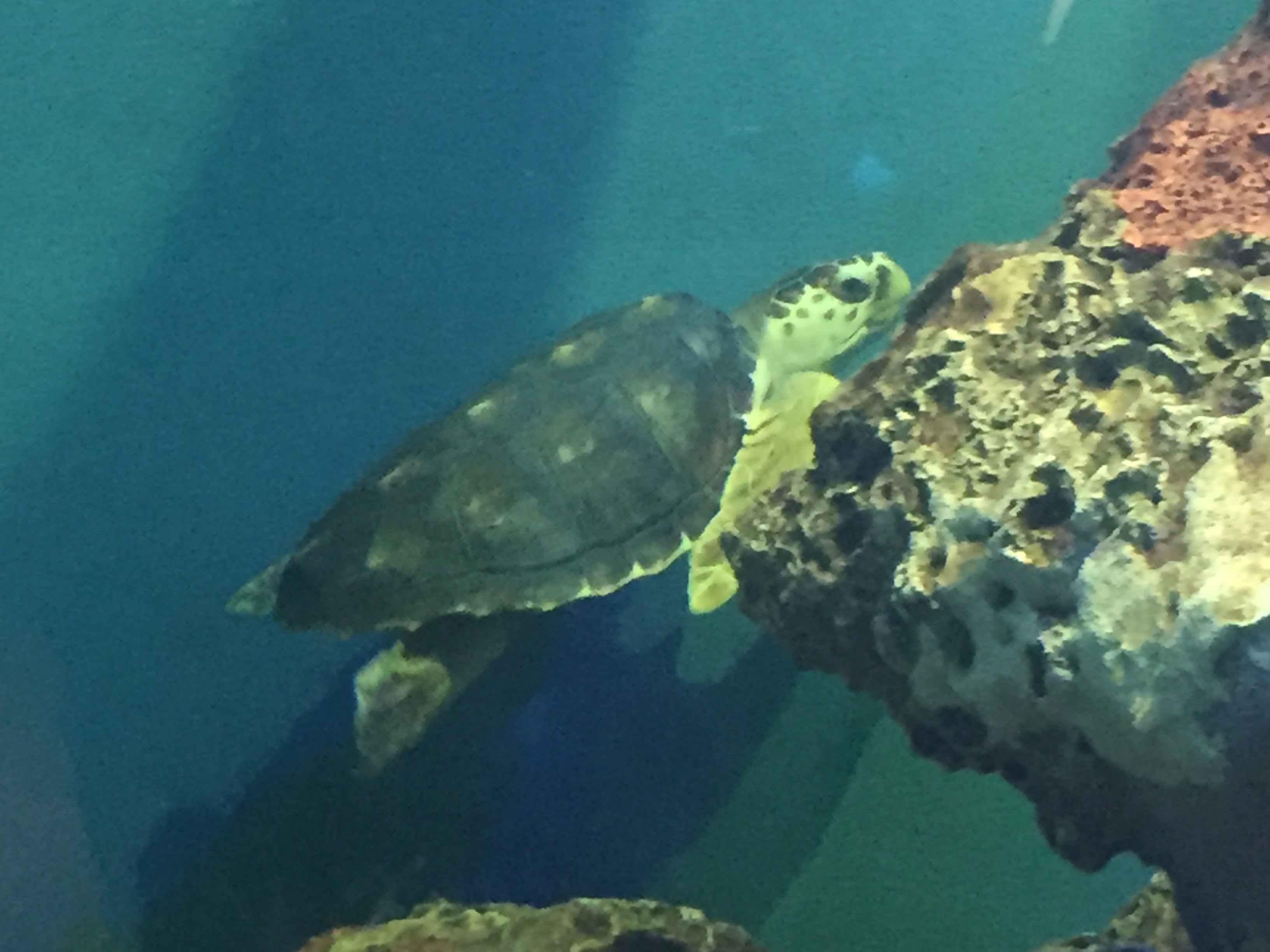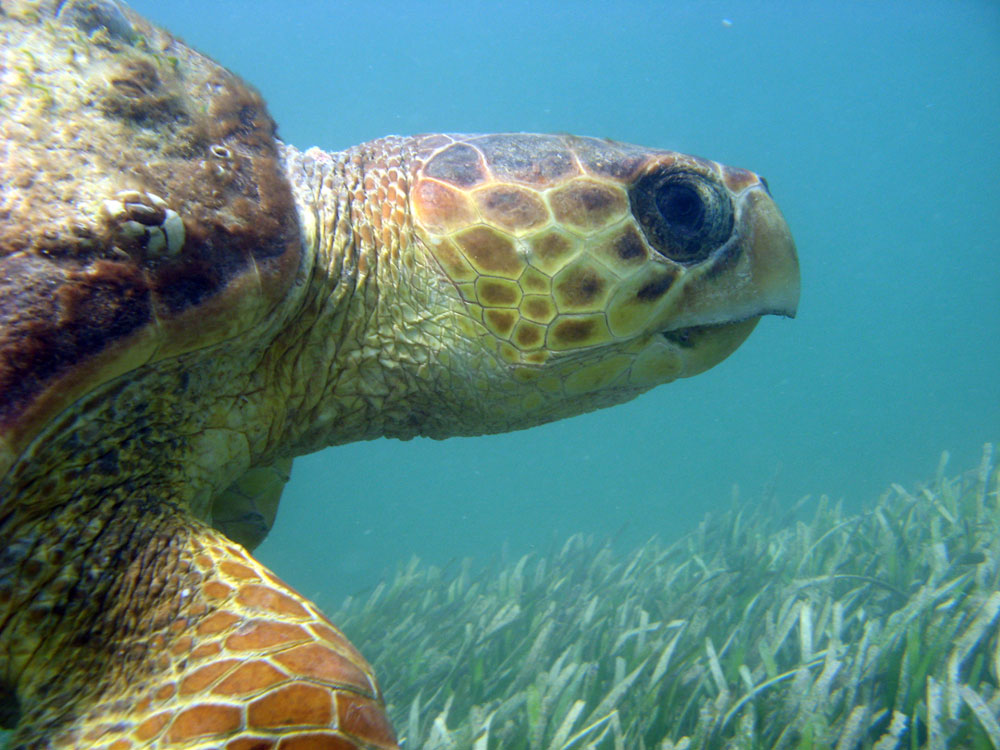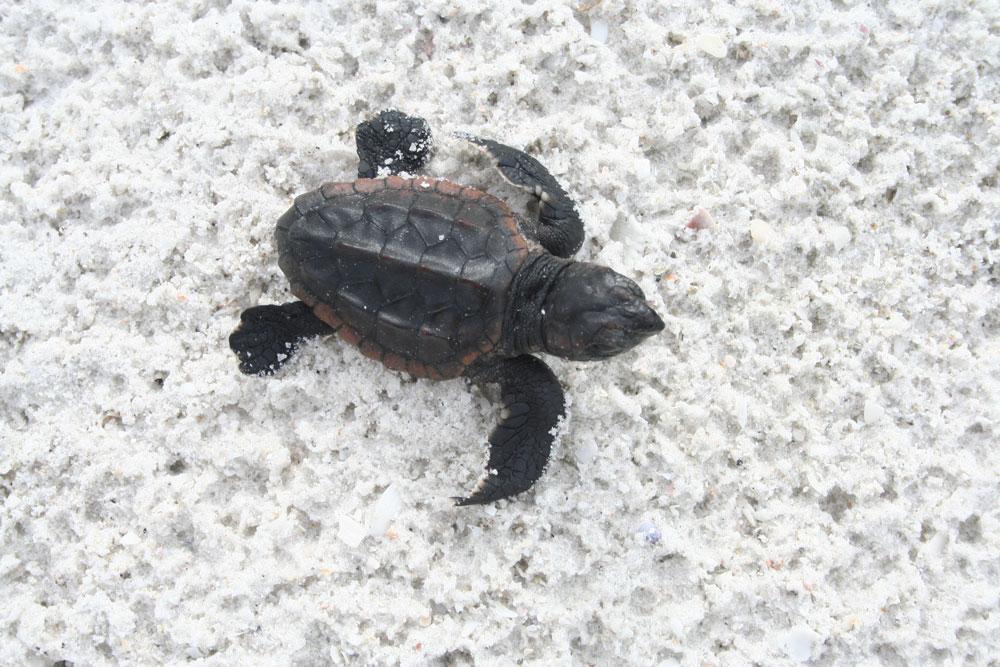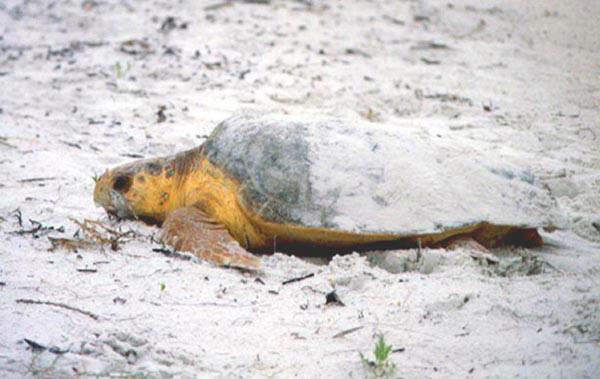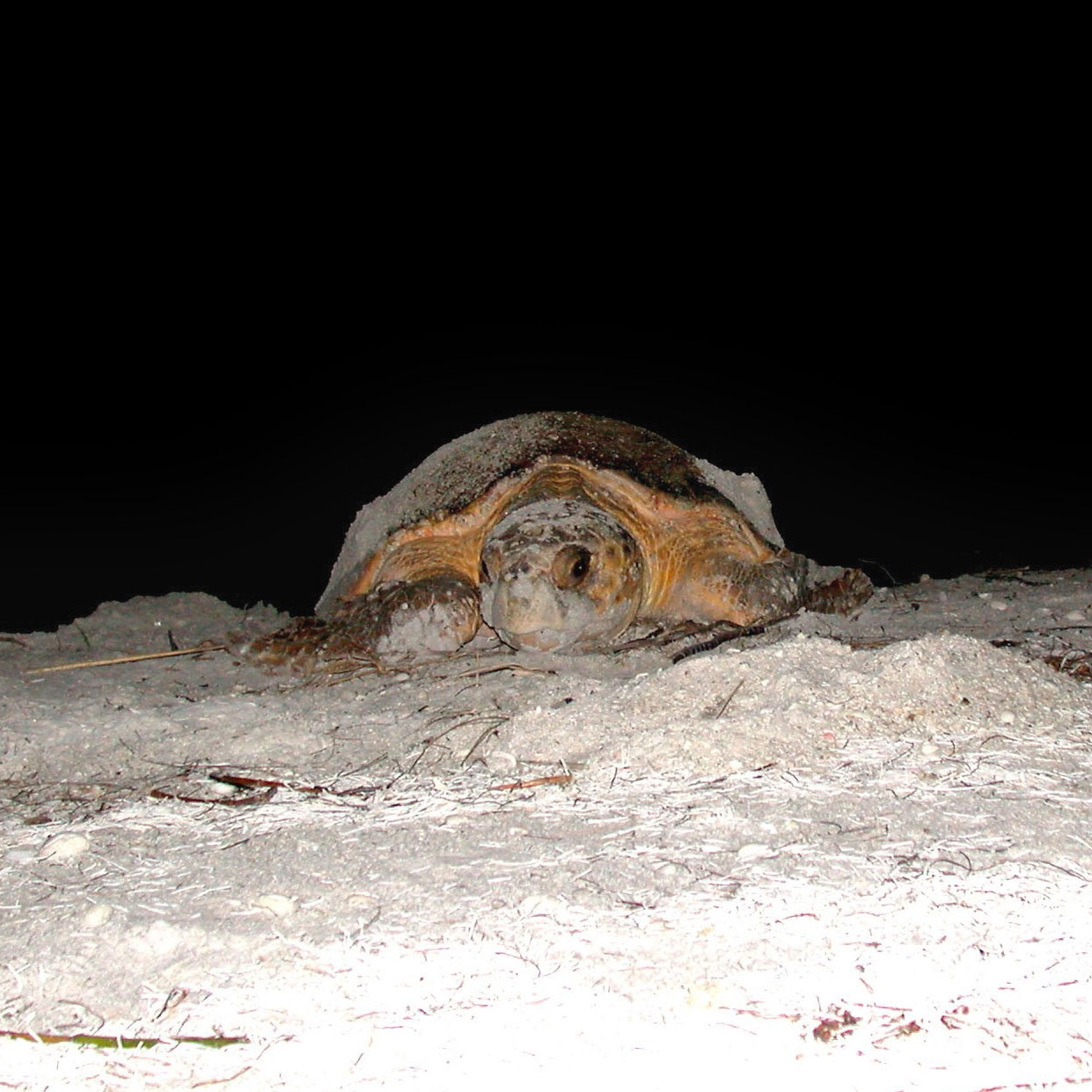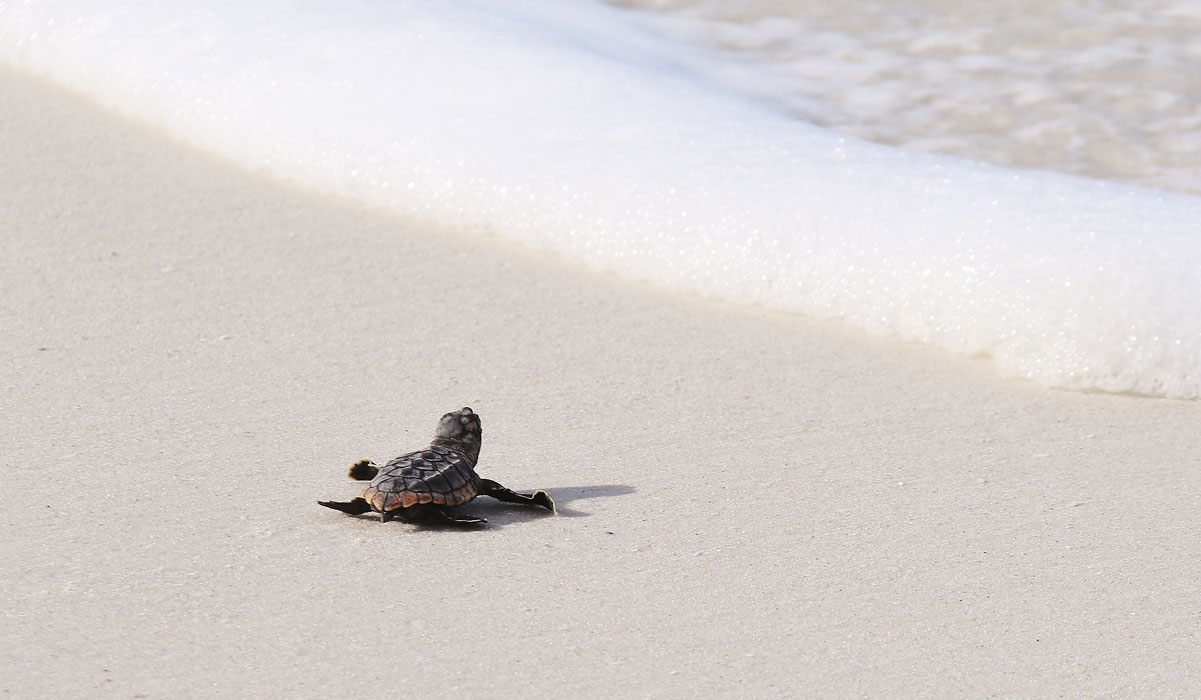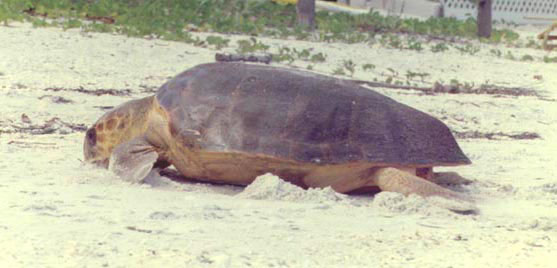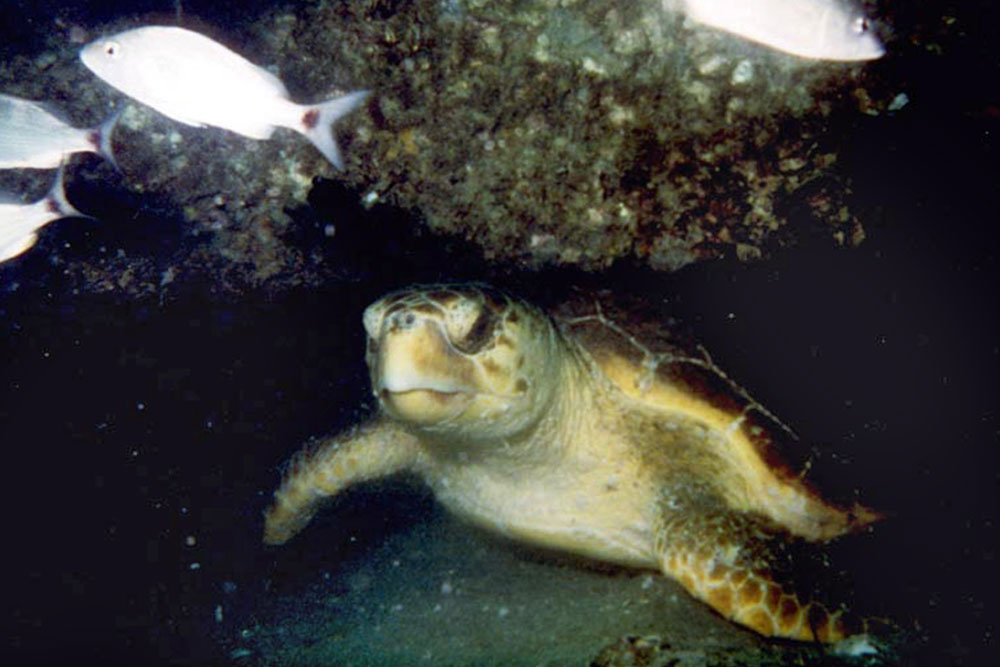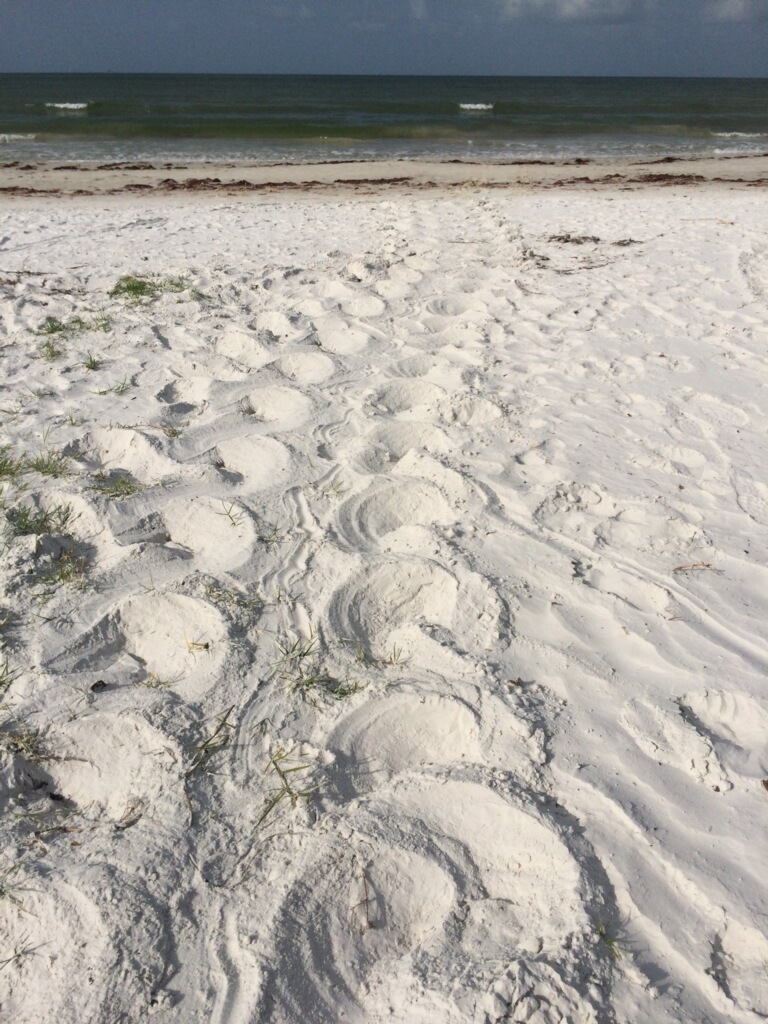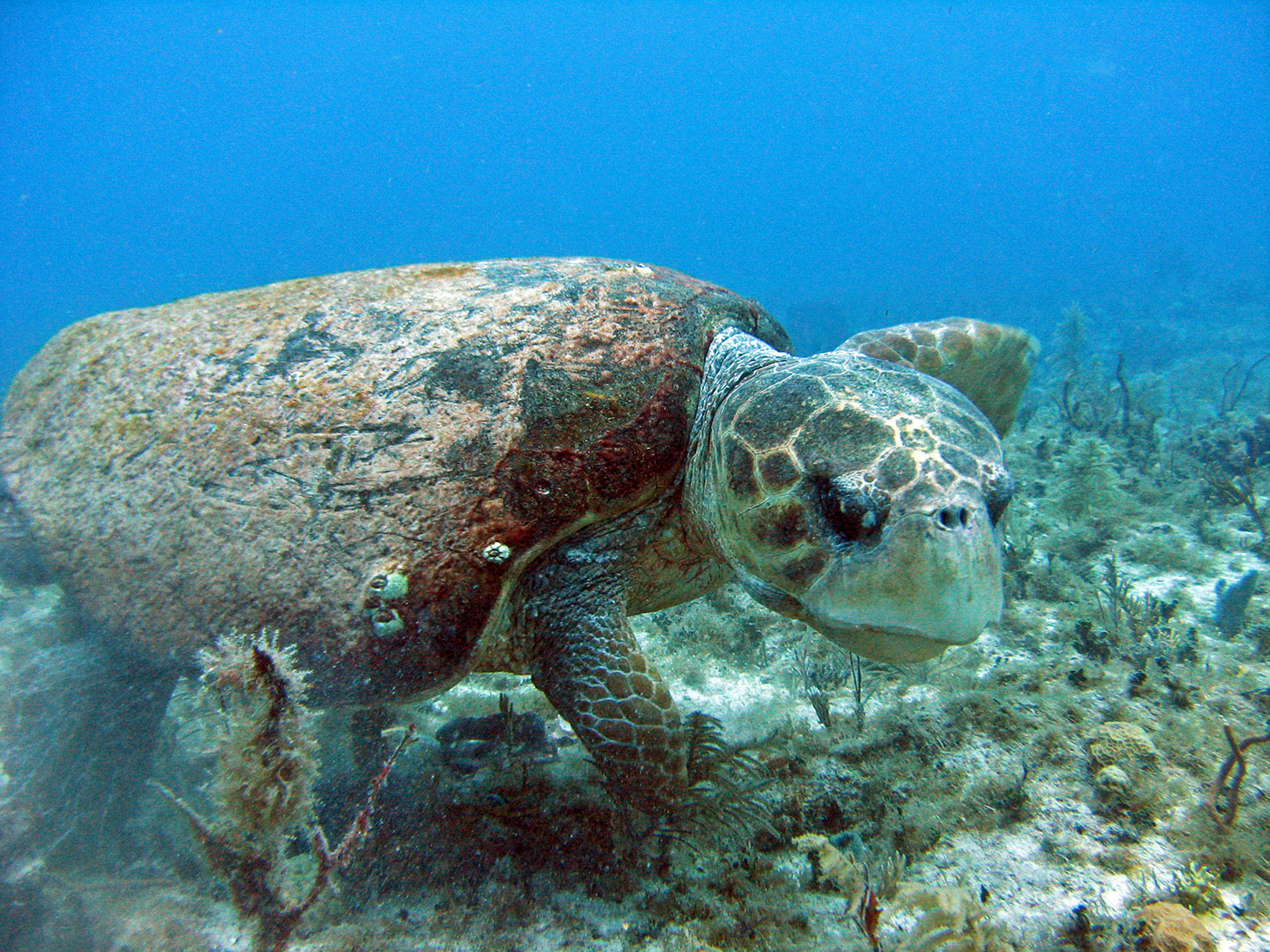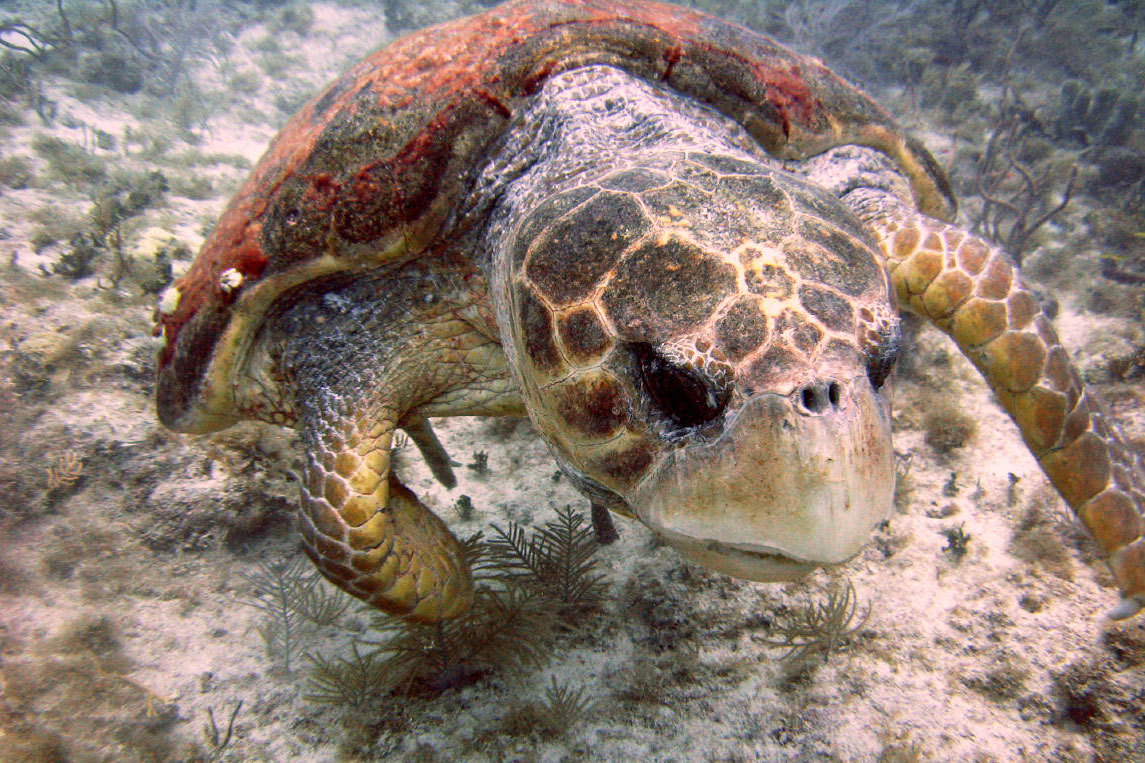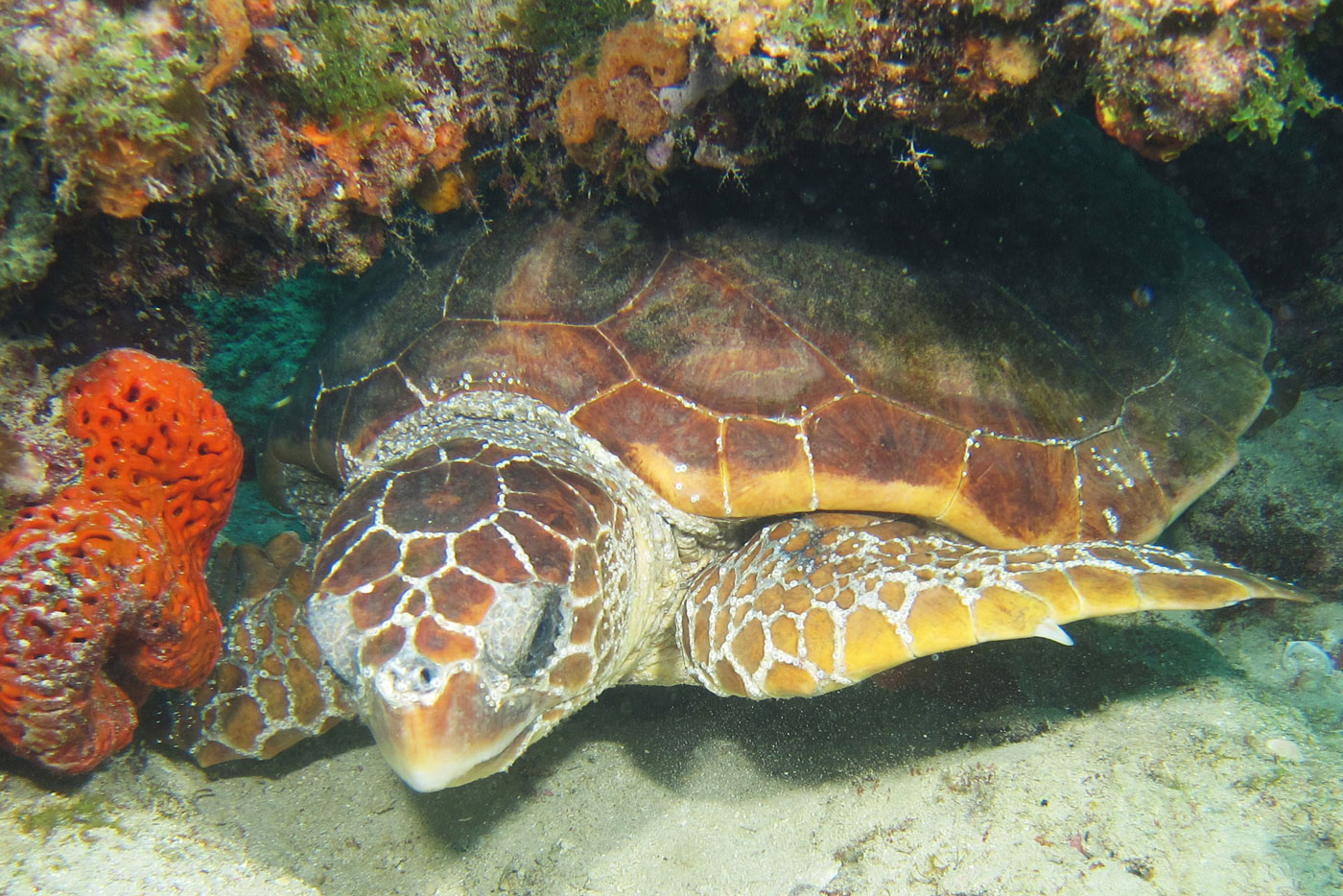Loggerhead
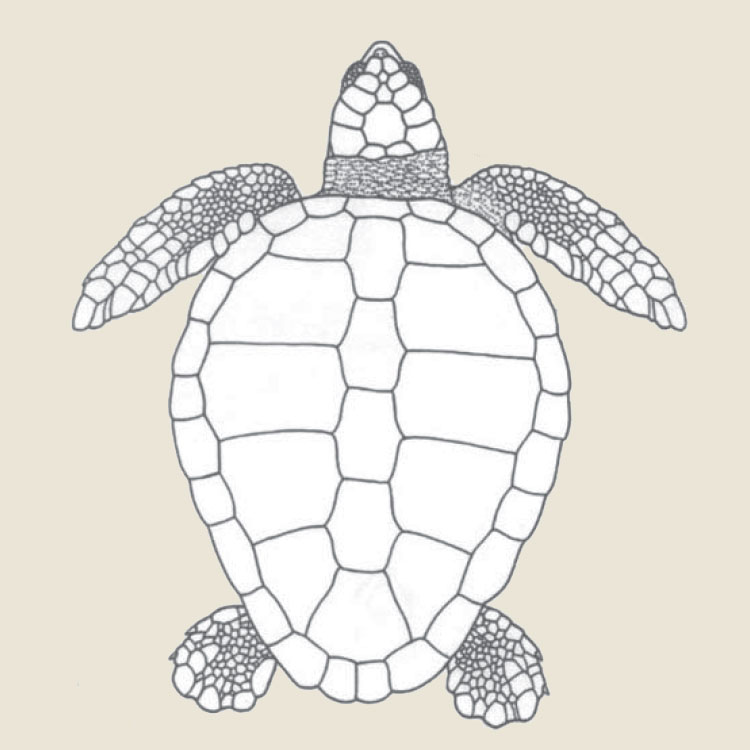
Name:
Loggerhead (Caretta caretta)
Distribution:
Bahamas, Cuba, The Dominican Republic and the east coast of the U.S. as far north as NJ and south through the Florida Keys and the Gulf of Mexico
Attributes:
Average length of 38 inches and can weigh from 200 to 400 pounds
Diet:
Crabs, mollusks, shrimp and jellyfish as well as encrusting animals that attach themselves to rocks and reefs
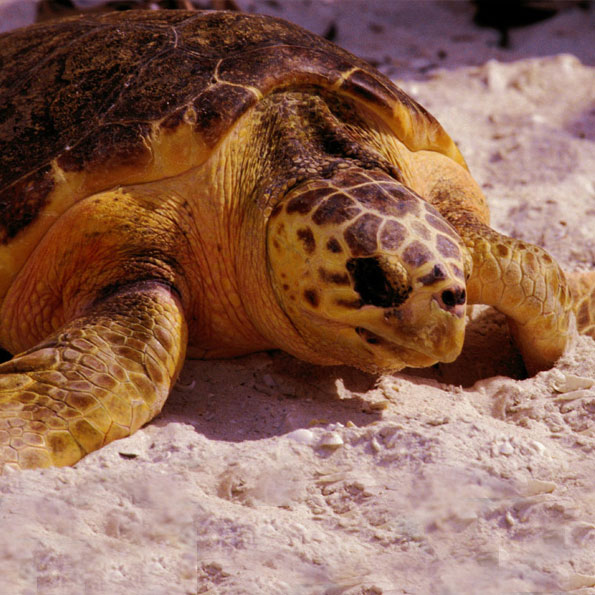 The Loggerhead turtle, so named because of its unusually large head, plies the temperate and tropical waters of the Bahamas, Cuba, The Dominican Republic and the east coast of the U.S. as far north as NJ and south through the Florida Keys and the Gulf of Mexico. It is truly diverse in its choice of habitat, abiding in coastal waters and streams as well as the open ocean. Caretta caretta, as it is called in scientific circles, has an average length of 38 inches and can weigh from 200 to 400 pounds. It attains these large proportions on a diet of crabs, mollusks, shrimp and jellyfish as well as encrusting animals that attach themselves to rocks and reefs. In order to feed on these hard to crack critters, the Loggerhead has a powerful jaw. It is further distinguished by its reddish brown shell comprised of five pairs of costal and vertebral scutes as well as three pairs of inframarginal scutes. Additionally, this species has claws on its fore-flippers: two each.
The Loggerhead turtle, so named because of its unusually large head, plies the temperate and tropical waters of the Bahamas, Cuba, The Dominican Republic and the east coast of the U.S. as far north as NJ and south through the Florida Keys and the Gulf of Mexico. It is truly diverse in its choice of habitat, abiding in coastal waters and streams as well as the open ocean. Caretta caretta, as it is called in scientific circles, has an average length of 38 inches and can weigh from 200 to 400 pounds. It attains these large proportions on a diet of crabs, mollusks, shrimp and jellyfish as well as encrusting animals that attach themselves to rocks and reefs. In order to feed on these hard to crack critters, the Loggerhead has a powerful jaw. It is further distinguished by its reddish brown shell comprised of five pairs of costal and vertebral scutes as well as three pairs of inframarginal scutes. Additionally, this species has claws on its fore-flippers: two each.
The Loggerhead is classified as a threatened, rather than endangered, species. In the eastern Gulf of Mexico, it numbers over 3000 strong with other populations in other areas of the world. However, the future of this, like all other sea turtles, is still in question. Continuing efforts to protect this delicate species have yielded positive results. Unfortunately, many Loggerheads are still lost to shrimp trawls and habitat loss.
As the most common of the sea turtles along Florida’s coast, the Loggerhead receives special attention in this state, particularly during nesting season. In the months of early Spring, the ocean wanderers gather off the coast in large numbers to mate. From May to August, under cover of night, the females labor to shore to deposit their precious cargoes.
